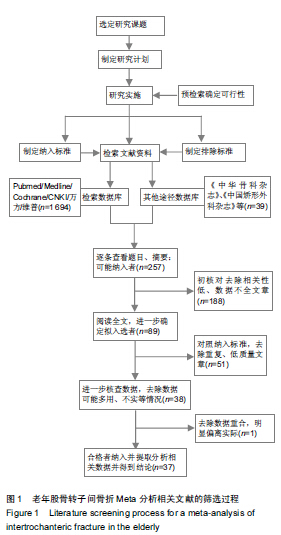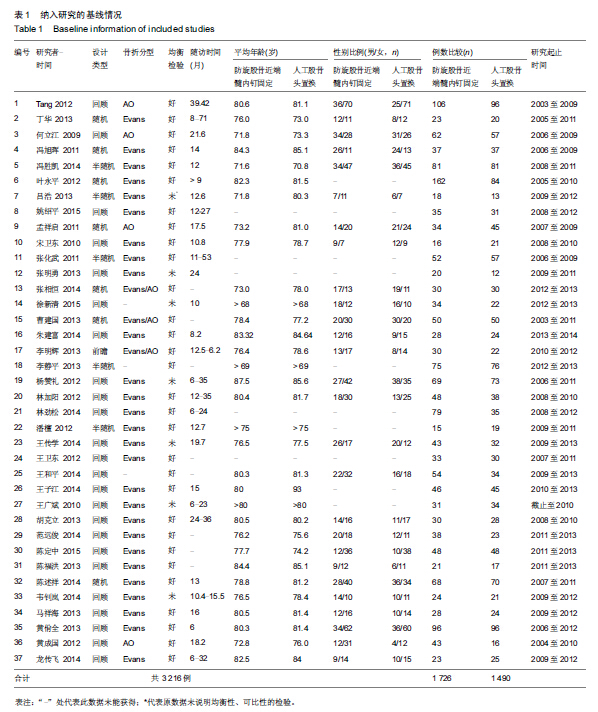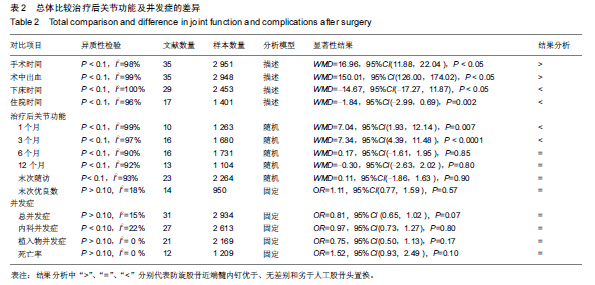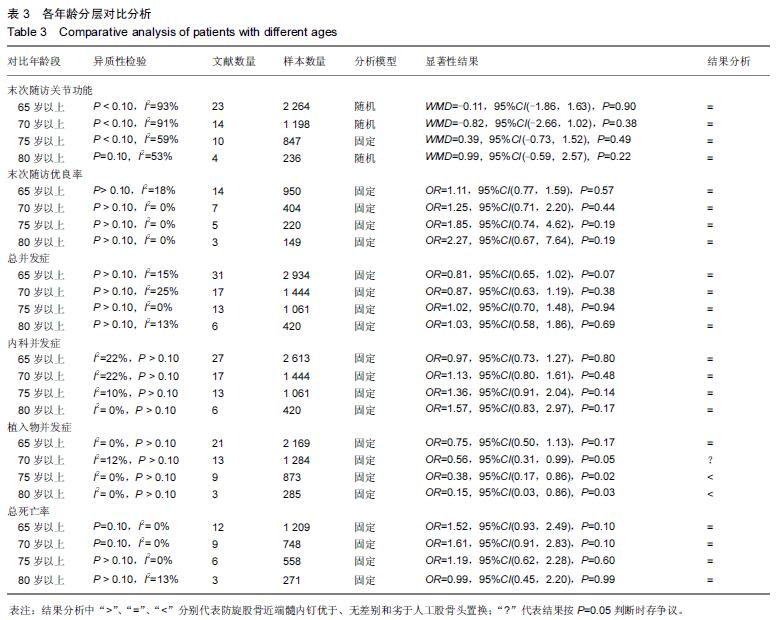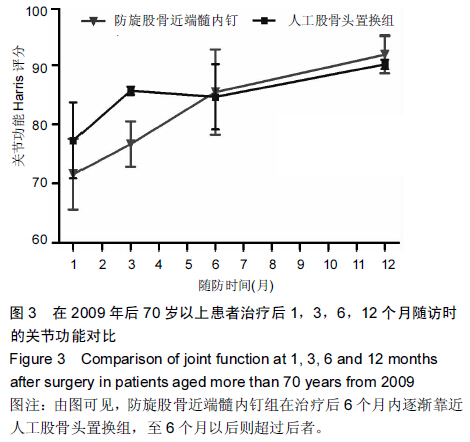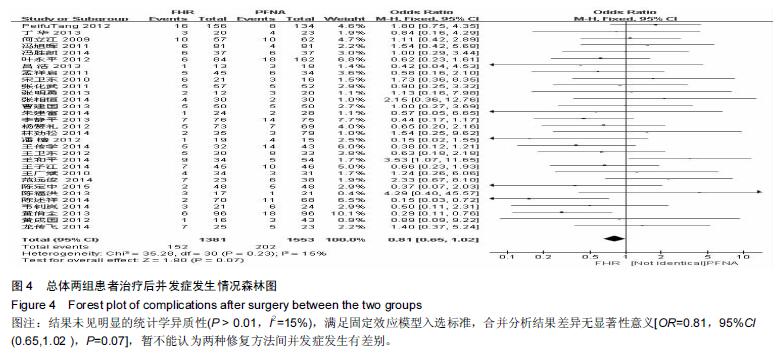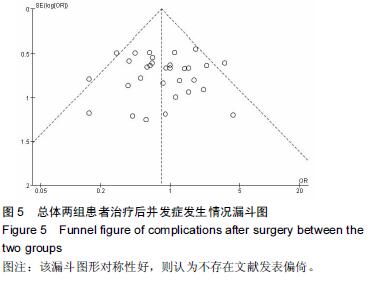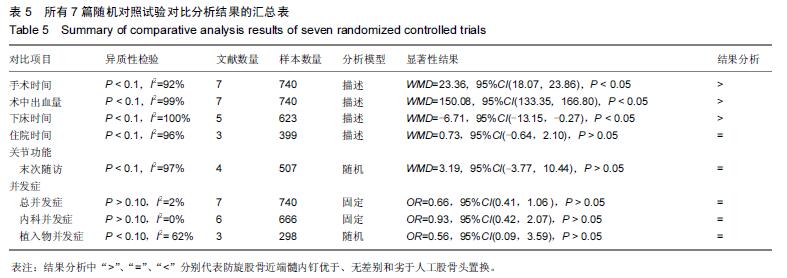| [1] Laohapoonrungsee A, Arpornchayanon O, Phornputkul C. Two-hole side-plate DHS in the treatment of intertrochanteric fracture: results and complications. Injury. 2005;36(11): 355-60.
[2] Sadowski C, Lübbeke A, Saudan M,et al. Treatment of reverse oblique and transverse intertrochanteric fractures with use of an intramedullary nail or a 95 screw-plate. J Bone Joint Surg. 2002;84(3):372-381.
[3] 饶明亮,杨爱勇,林传松,等. 三种内固定方式治疗老年股骨粗隆间骨折疗效分析[J].中国骨与关节损伤杂志. 2009,24(7): 36-637.
[4] 朱二山,孙俊英,王勇,等. PFNA与DHS 治疗老年不稳定性股骨粗隆间骨折疗效观察[J].中国骨与关节损伤杂志. 2009,24(2): 50-151.
[5] 冯卫.三种股骨近端髓内固定系统 (PFNA, PFNA-II, InterTan) 与中国人股骨近端形态学匹配性研究及其固定股骨转子间骨折的有限元分析[D].南方医科大学,2012.
[6] Hammad A, Abdel-Aal A, Said HG, et al. Total hip arthroplasty following failure of dynamic hip screw fixation of fractures of the proximal femur. Acta Orthopaedica Belgica. 2008;74(6): 788.
[7] Heiney J, Battula S, Njus G, et al. Biomechanical comparison of three second-generation reconstruction nails in an unstable subtrochanteric femur fracture model. Proc Inst Mech Eng H. 2008;222(6):959-966.
[8] 黄俊,纪方,章浩.老年股骨转子间骨折手术方法的选择[J]. 中华全科医学,2008,6(12):1224-1226.
[9] 侯志勇,张英泽.骨科学-股骨转子间骨折的分类及治疗进展[J]. 北京:人民卫生出版社,2014: 468-470.
[10] 胡艳辉.高龄转子间骨折三种不同的手术治疗方法临床疗效分析[D].山西医科大学, 2013.
[11] 王子江. 两种方法治疗高龄不稳定型股骨转子间骨折伴骨质疏松症的疗效分析[D].山西医科大学, 2014.
[12] Tang P, Hu F, Shen J,et al. Proximal femoral nail antirotation versus hemiarthroplasty: a study for the treatment of intertrochanteric fractures. Injury. 2012;43(6):876-881.
[13] 曹建国. 微创PFNA内固定与人工股骨头置换术治疗高龄股骨转子间骨折的临床对比研究[J].中国医师进修杂志,2013,36(5): 56-57.
[14] 陈定中,赵海,唐闻海.股骨近端防旋髓内钉内固定与人工股骨头置换治疗高龄不稳定型股骨粗隆间骨折疗效分析[J].检验医学与临床, 2015,12(5):639-640,643.
[15] 陈福洪,陈泽,万仲贤.微创防旋股骨近端髓内钉内固定术与人工股骨头置换术治疗高龄股骨转子间骨折近期疗效比较[J]. 实用医院临床杂志, 2013,10(5):130-132.
[16] 陈述祥,刘彦,陈丽君.老年股骨转子间骨折不同治疗方法的评价[J].暨南大学学报(自然科学与医学版),2014,35(2):177-181.
[17] 丁华,章洪喜,袁即山,等.股骨近端髓内钉-螺旋刀片内固定与人工股骨头置换术治疗老年股骨转子间不稳定型骨折的疗效比较[J]. 生物医学工程与临床,2013,17(5):450-454.
[18] 范远俊,向阳,李正云,等.改进型防旋股骨近端髓内钉与人工股骨头置换术治疗老年股骨粗隆间骨折疗效比较[J].创伤外科杂志. 2014,16(3):264-266.
[19] 冯胜凯.老年股骨转子间骨折PFNA固定与人工股骨头置换疗效比较[D].郑州大学,2014.
[20] 冯旭晖.股骨近端抗旋髓内钉置入与股骨头置换对股骨转子间骨折的疗效分析[J].求医问药:下半月刊,2011,9(7): 90-91.
[21] 何立江.老年股骨转子间骨折PFNA 固定与半髋置换手术治疗比较[D].福建医科大学,2009.
[22] 胡克立,胡海清,时宏富,等. PFNA内固定与人工股骨头置换术治疗高龄不稳定股骨粗隆间骨折的比较[J].中国骨与关节损伤杂志, 2013, 28(6):547-548.
[23] 黄成国,叶君健. 3种不同方式治疗老年股骨转子间骨折的病例对照试验[J].中国骨伤, 2012, 28(7):549-553.
[24] 黄佾全,李海洋,程瑞玫.内固定与股骨头置换治疗转子间骨折疗效分析[J].中国现代医生, 2013,51(8):133-134.
[25] 李静平,王刚,黎佰威.内固定与股骨头置换治疗转子间骨折临床疗效分析[J].亚太传统医药, 2013,9(12):142-143.
[26] 李明辉.髓内及髓外内固定治疗股骨粗隆间骨折的临床及生物力学研究[D]. 武汉大学, 2013.
[27] 林加阳,徐耿填,林勇彬,等. PFNA和股骨头置换治疗股骨粗隆间骨折的疗效研究[J].中外医学研究. 2012,10(9):5-6.
[28] 林劲松,李华,傅日斌,等.股骨近端防旋髓内钉与人工股骨头置换治疗高龄不稳定股骨粗隆间骨折的临床应用[J].福建医药杂志, 2014,36(3):30-32.
[29] 吕浩, 荆珏华,周云,等.骨水泥型人工股骨头置换和股骨近端抗旋转髓内钉内固定治疗老年不稳定股骨转子间骨折临床效果[J]. 生物医学工程与临床,2013,17(4):372-376.
[30] 马祥海, 史培芹, 申文瑞,等. 人工股骨头置换和股骨近端防旋髓内钉治疗老年股骨转子间骨折的疗效分析[J].中国社区医师, 2014, 30(14):44-45.
[31] 孟祥启,丁宁,于吉文,等. 股骨近端抗旋髓内钉置入和骨水泥型人工股骨双动头置换治疗老年转子间骨折[J].中国组织工程研究. 2011,15(4):585-588.
[32] 潘檀,赵致良,郭标,等.大转子式股骨柄置换及股骨近端防旋髓内钉治疗老年股骨转子间骨折[J].临床骨科杂志, 2012,15(3): 271-273.
[33] 宋卫东, 彭岳文, 李德,等. 老年股骨转子间骨折治疗:股骨近端髓内钉-螺旋刀片和人工关节置换的效果比较[J]. 中国组织工程研究与临床康复. 2010,14(43):7999-8003.
[34] 王传学,杜秀藩.双极人工股骨头与PFNA在不稳定型股骨粗隆间骨折的疗效评析[J]. 中华关节外科杂志(电子版). 2014,8(4): 60-63.
[35] 王广斌,付勤,刘忠厚,等.人工股骨头置换与 PFNA 内固定治疗高龄股骨转子间不稳定骨折的疗效分析[J].中国骨质疏松杂志, 2010, 16(6):404-406.
[36] 王和平,孙学斌,邓强,等.PFNA与FHR2种手术方式治疗老年人股骨转子间骨折疗效比较[J]. 新疆医科大学学报. 2014,37(4): 478-481.
[37] 王卫东,白峰.人工股骨头置换术与PFNA内固定治疗高龄不稳定型股骨粗隆间骨折的疗效比较[J].科学技术与工程,2012, 20(35): 9640-9643.
[38] 韦钊岚,李富明,程珂琳,等.防旋型股骨近端髓内钉固定与人工股骨头置换对高龄不稳定股骨粗隆间骨折的疗效比较[J].武汉大学学报:医学版,2014,35(A01):609-612.
[39] 徐新清,元占玺.两种手术方式治疗不稳定型股骨转子间骨折的比较[J].中外医疗,2015,34(7)49-50:
[40] 杨赞礼,黄武斌,郭仰丹,等.防旋型股骨近端髓内钉与人工股骨头置换治疗超高龄股骨粗隆间骨折的对比分析[J].中华损伤与修复杂志(电子版),2012,7(5):59-61.
[41] 姚绍平,孙先润,李维朝,等. 不稳定型股骨转子间骨折人工股骨头置换和股骨近端髓内钉内固定疗效分析[J]. 创伤外科杂志, 2015, 17(2):131-134.
[42] 叶永平,刘晓强,符臣学,等.股骨近端螺旋刀片抗旋髓内钉内固定和人工股骨头置换治疗高龄患者转子间骨折的疗效分析[J]. 2012, 6(12):88-91.
[43] 尤传飞,邱维胜,李林东,等. PFNA与人工股骨头置换治疗高龄EvansIc型股骨粗隆间骨折的疗效比较[J].生物骨科材料与临床研究. 2014,11(4):32-35.
[44] 张化武,王栋,赵磊,等.股骨近端锁定板内固定术与人工股骨头置换术治疗高龄股骨转子间骨折疗效观察[J].山东医药. 2011,51(10): 58-59.
[45] 张明勇,郭卫春,胡锐,等.人工半髋置换和PFNA治疗高龄股骨转子间骨折[J]. 实用骨科杂志, 2013,19(5):453-455.
[46] 张相恒.微创PFNA内固定治疗高龄股骨转子间骨折的对比分析[J].黑龙江医药科学, 2014,37(5):75-76.
[47] 朱建富,郑海荣,叶明呈.老年骨质疏松性不稳定型股骨粗隆间骨折患者关节置换与PFNA内固定的对照研究[J].健康研究,2014, 34(6):661-663.
[48] Kim SY, Kim YG, Hwang JK. Cementless calcar-replacement hemiarthroplasty compared with intramedullary fixation of unstable intertrochanteric fractures. J Bone Joint Surg. 2005; 87(10):2186-2192.
[49] Kesmezacar H, O?üt T, Bilgili MG, et al. Treatment of intertrochanteric femur fractures in elderly patients: internal fixation or hemiarthroplasty. Acta Orthop Traumatol Turc. 2005;39(4):287-294. |
